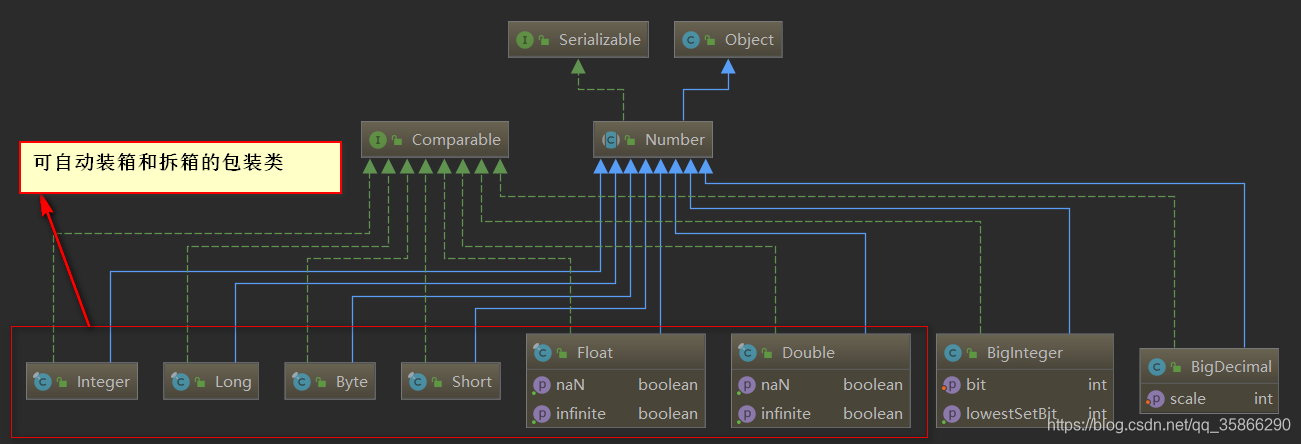什么是自动装箱和拆箱
很简单,下面两句代码就可以看到装箱和拆箱过程
//自动装箱
Integer total = 99;
//自定拆箱
int totalprim = total;
- 装箱就是自动将基本数据类型转换为包装器类型;
- 拆箱就是自动将包装器类型转换为基本数据类型。
下面我们来看看需要装箱拆箱的类型有哪些:

自动装箱
源码:
public static Integer valueOf(int i) {
if (i >= IntegerCache.low && i <= IntegerCache.high)
return IntegerCache.cache[i + (-IntegerCache.low)];
return new Integer(i);
}
其中:
static final int low = -128;
static final int high= 127;
static final Integer cache[] = new Integer[(high - low) + 1];
分析:
- Integer total = 99; 调用valueOf(int i)方法
- 如果 i 小于 -128 或者 i 大于127,就new Integer(i)
- 如果 i 大于 -128 并且 i 小于 127 ,就调用缓存区提前创建好的对象
案例
Integer a1 = 89;
Integer a2 = 89;
System.out.println(a1 == a2); // true
Integer b1 = 130;
Integer b2 = 130;
System.out.println(b1 == b2); // false
进行归类:
Integer派别:Integer、Short、Byte、Character、Long这几个类的valueOf方法的实现是类似的。
Double派别:Double、Float的valueOf方法的实现是类似的。每次都返回不同的对象。
| 类型 | 相同值范围 | 不同值范围 |
|---|---|---|
| Integer | (-128,128) | i >= 128 或者 i < -128 |
| Short | (-128,128) | s >= 128 或者 s < -128 |
| Character | c<128 | c >= 128 |
| Long | (-128,128) | l >= 128 或者 l < - 128 |
Boolean b1 = true;
Boolean b2 = true;
System.out.println(b1 == b2); //true
public static Boolean valueOf(boolean b) {
return b ? Boolean.TRUE : Boolean.FALSE;
}
分析:
可以看到它并没有创建对象,因为在内部已经提前创建好两个对象,因为它只有两种情况,这样也是为了避免重复创建太多的对象。
自动拆箱
源码:
private final int value;
public int intValue() {
return value;
}
























 3127
3127

 被折叠的 条评论
为什么被折叠?
被折叠的 条评论
为什么被折叠?








